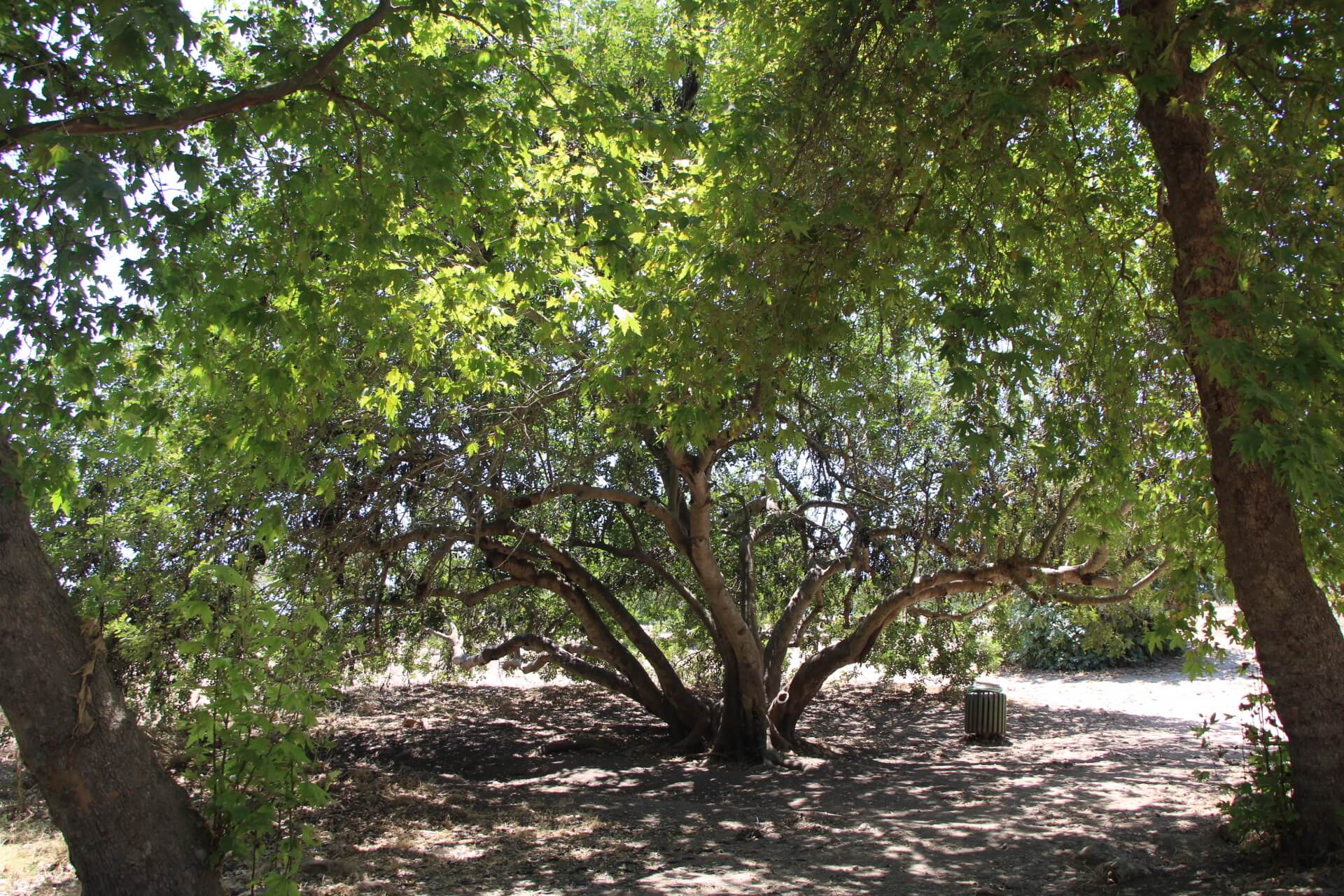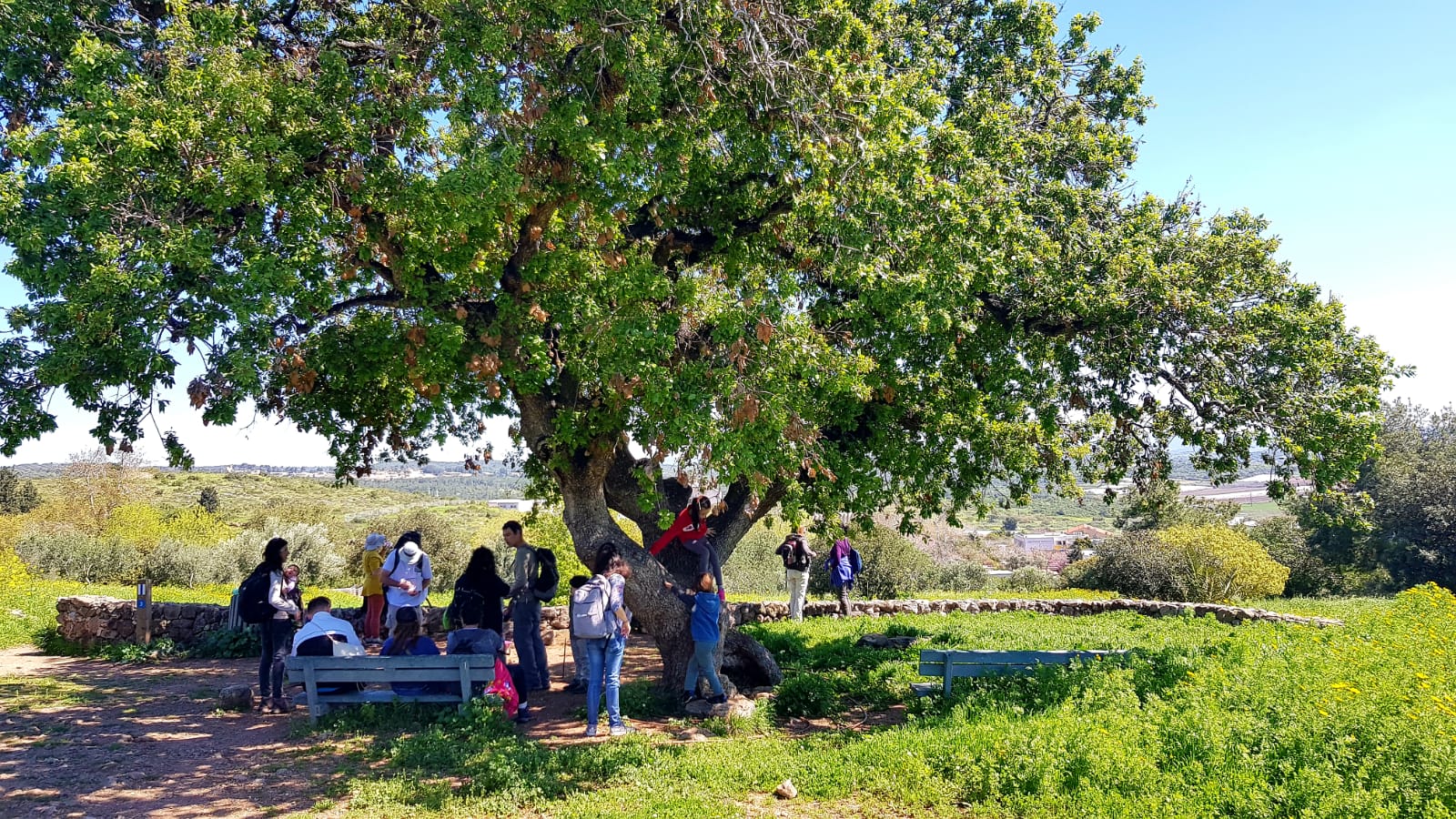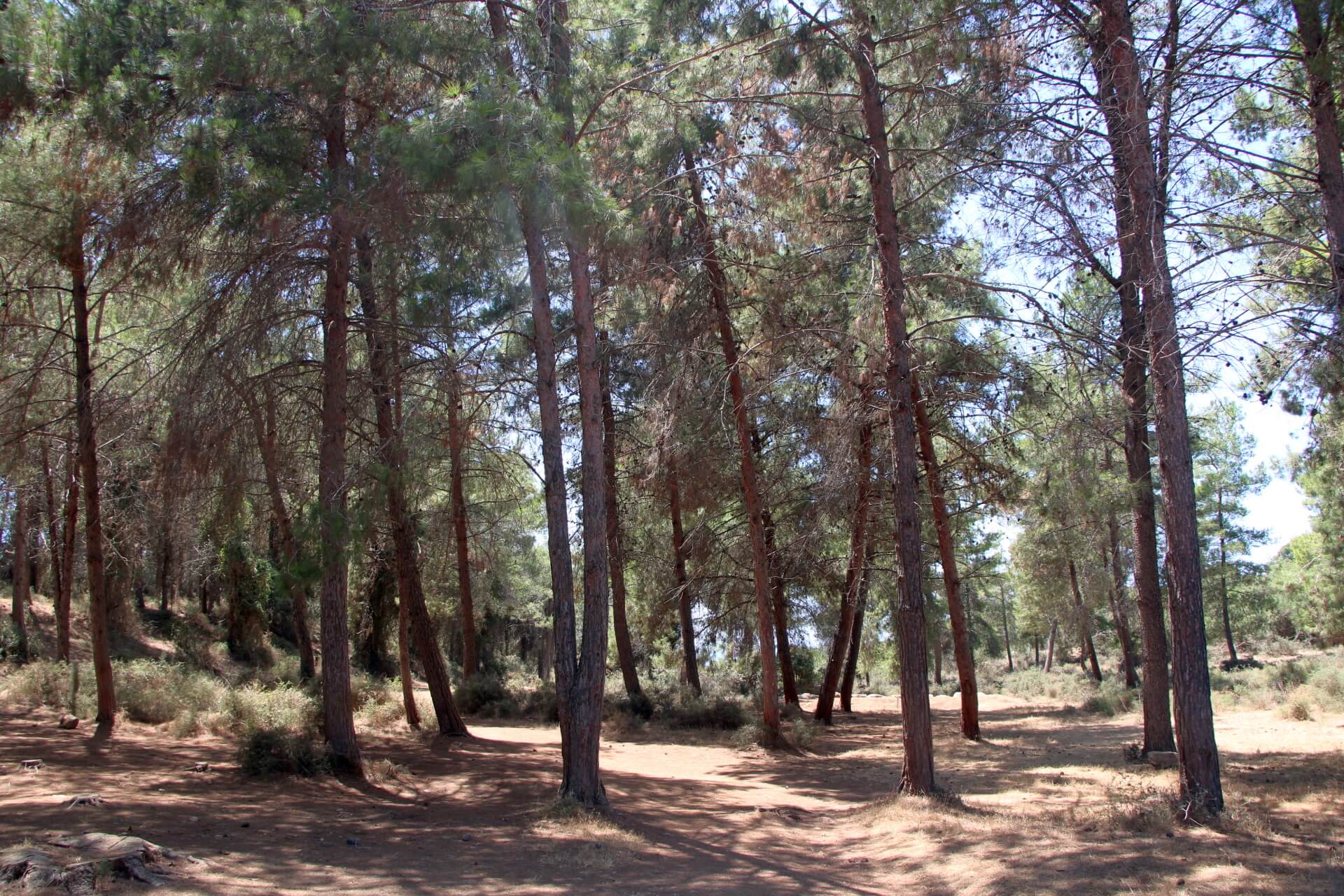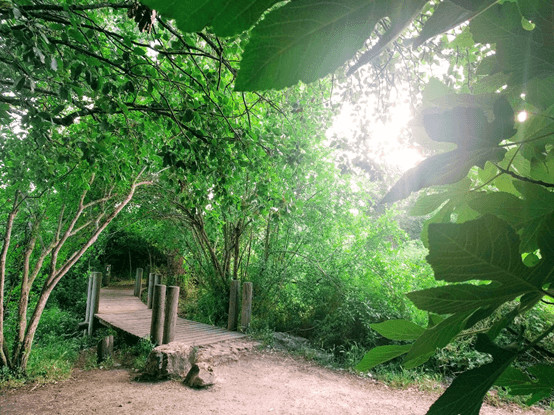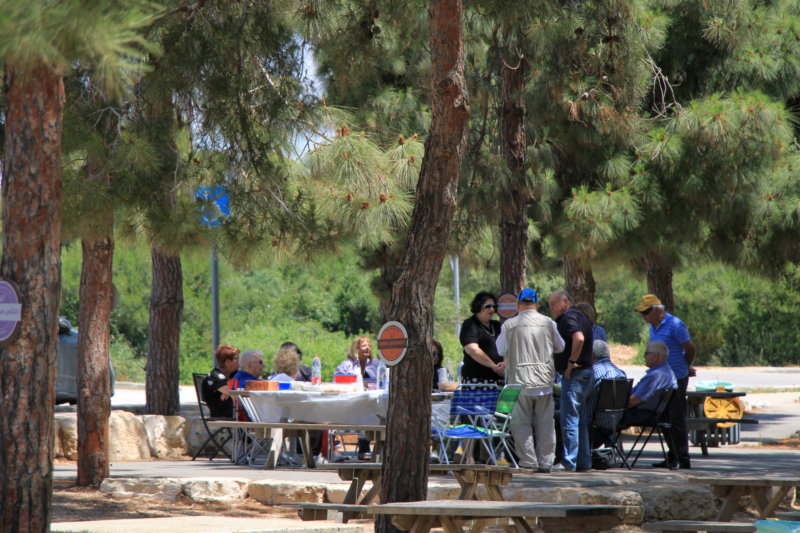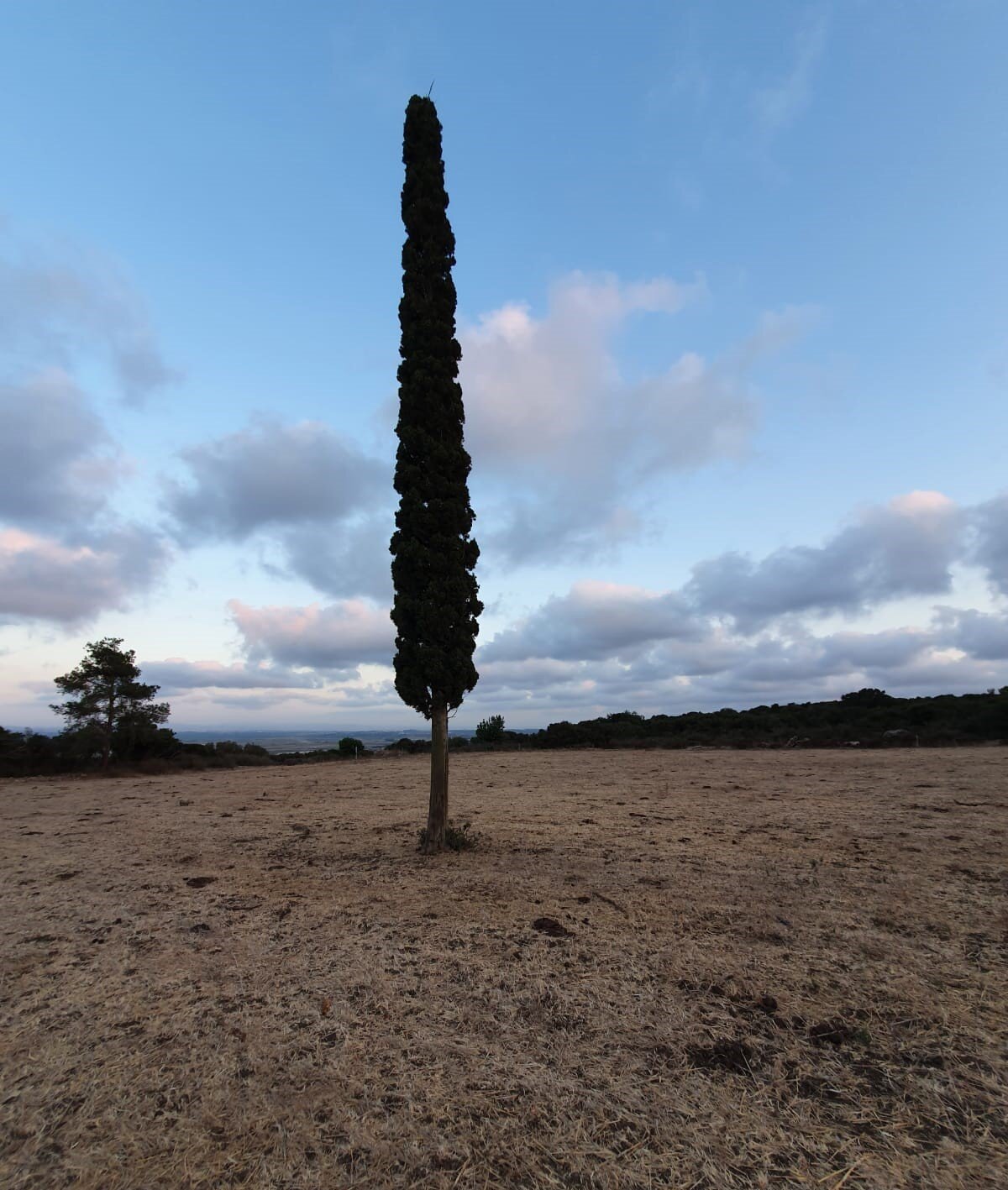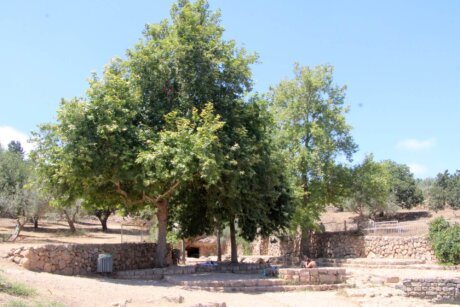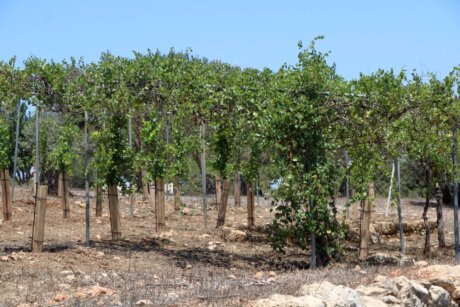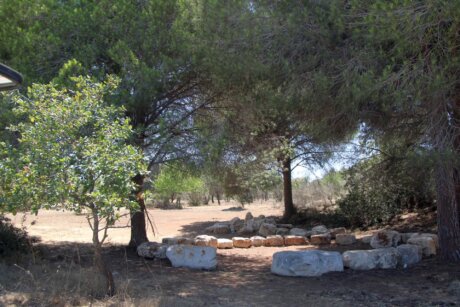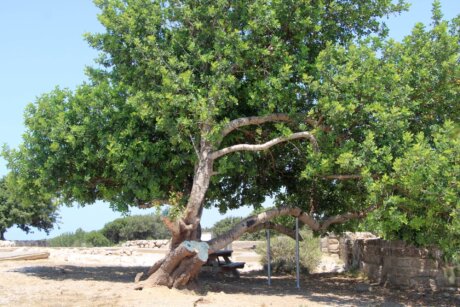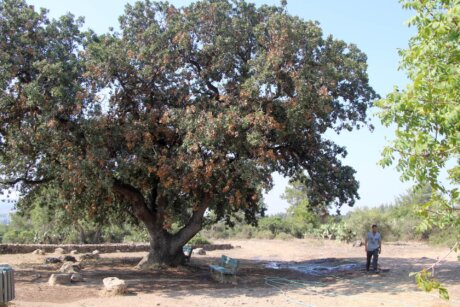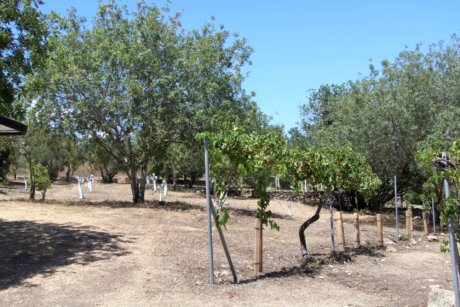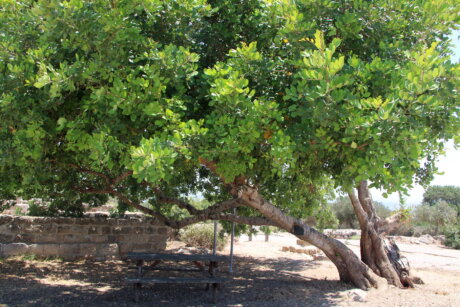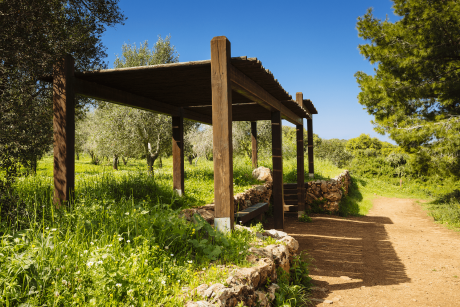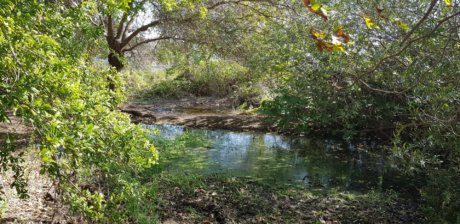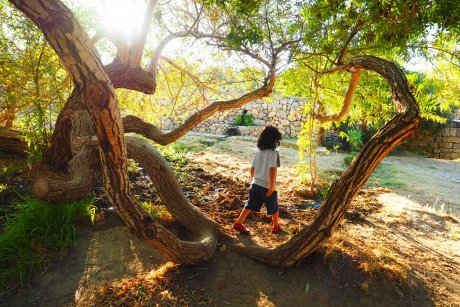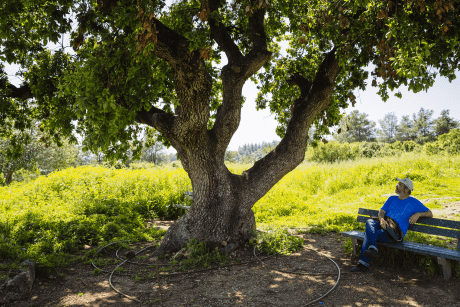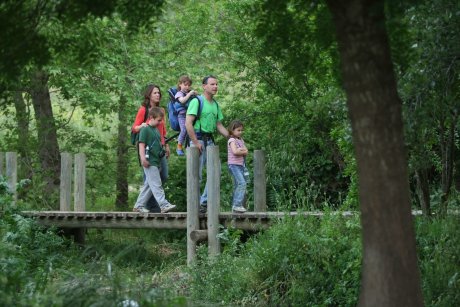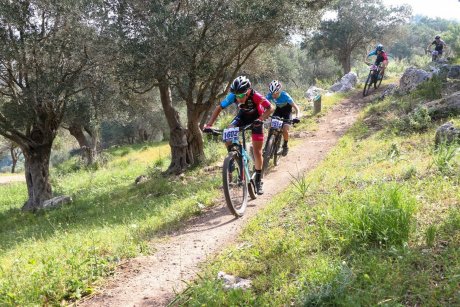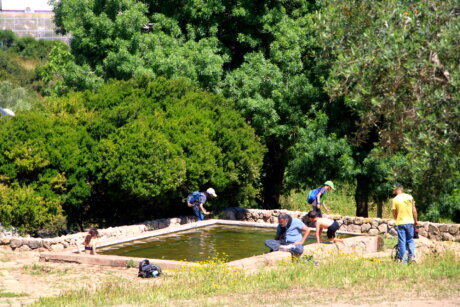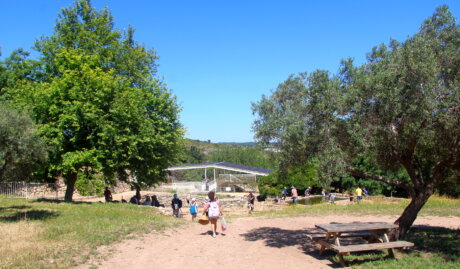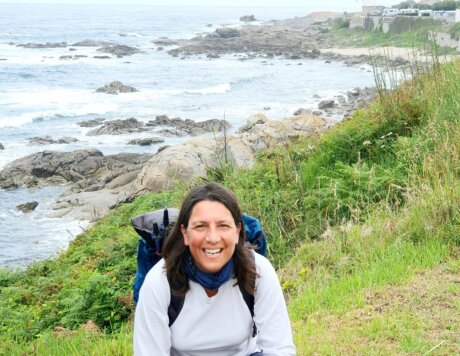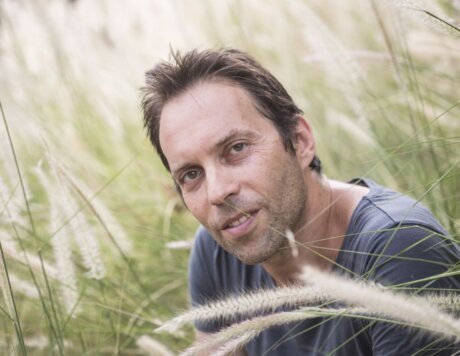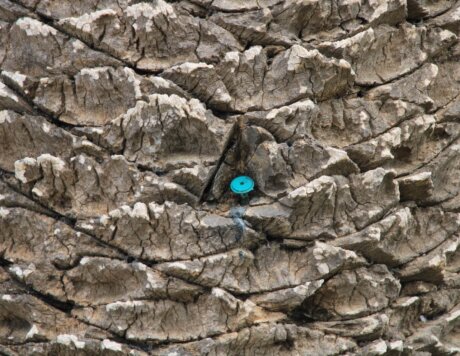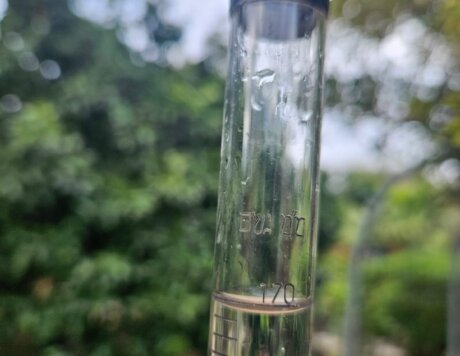The anti-shade spot
This is not a place to come to for shade, but for inspiration and thought. This is a very special place. When we thought about trees that give shade, Tzach was reminded of the lone cypress. Once there were many cypress trees here, but with time they were removed. The surrounding field is currently used for crops such as oats, to feed the goats. This cypress remains alone not because it was forgotten, but due to the special approach of Hugo Jan Trago, the outgoing CEO of Ramat Hanadiv, who asked to leave it there. Instead of burdening you with explanations, we’ll let the songs do the talking. Tzach, the Nature Park Manager, dreams that one day a sign will be installed here with the words of the song, Cypress, by Ehud Manor
Shady trees along the cycle trails at Ramat Hanadiv
Those who pedal also deserve to stop for a rest under a tree with a shady canopy, and let go of the handlebars and seat, and if there’s a view – the benefit doubles. Tzach recommends planning a stop under two trees: the giant carob in the olive collection grove, on the blue cycle trail (adjacent to the red walking trail) and the carob tree on the blue cycle trail at Kebara Stream (adjacent to the green walking trail), a wonderful place to stop and admire the view.
By the way, Tzach has a reason for recommending a break under a carob tree. He has a soft spot for carob trees: ‘They have a nice trunk, you can eat from them, and the goats are also “crazy” about them’.


